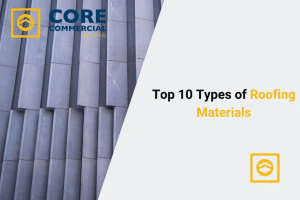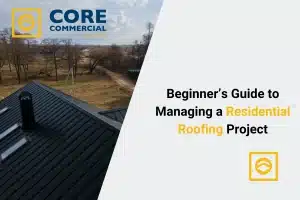Understanding your building’s weather history is essential for your roof investment because it helps you choose materials, designs, and maintenance strategies that can withstand the local climate and extend the roof’s lifespan. Every commercial roof faces unique environmental challenges, from hail and high winds to extreme heat or cold. By studying weather data specific to your building, you can predict risks, plan maintenance, and make smarter long-term financial decisions.
This guide explains how weather history affects roof performance, how to use it for better planning and budgeting, and why roofing success depends on more than just the material you select.
1. How Weather History Impacts Roof Lifespan
A roof’s lifespan depends on more than its age; it reflects everything it has endured.
If your roof has faced multiple hailstorms, strong winds, or temperature swings, its structure might already be compromised. Weather exposure accelerates wear, weakens seams, and reduces insulation performance, even when the roof looks fine from the surface.
Key takeaway: Weather conditions leave lasting effects that directly influence how long your roof can perform safely and efficiently.
2. Using Weather Data to Predict Roof Longevity
Analyzing past weather events helps forecast how much life your roof has left.
By comparing its current age with historical storm data, building owners can estimate when major repairs or replacement will be needed.
Important data to monitor:
-
Hailstorm frequency and size: Helps evaluate risk and determine if impact-resistant upgrades are necessary.
-
Wind speeds and uplift events: Reveal structural vulnerabilities caused by repeated stress.
-
Temperature extremes: Highlight how expansion and contraction may have weakened materials over time.
When you align maintenance planning with weather data, you reduce the risk of costly emergency repairs and unexpected failures.
3. Planning Maintenance and Budgets with Weather Insights
Knowing your local weather history turns roofing maintenance from reactive to proactive.
-
Hail-prone regions: Use impact-resistant cover boards to protect membranes from punctures.
-
Wind-heavy areas: Choose full adhesion or reinforced fastening systems for stronger attachment.
-
Wet climates: Improve drainage to prevent ponding and early membrane deterioration.
Weather data also helps determine the minimum performance level your roof assembly needs to meet local conditions and warranty standards.
4. Roof Performance Depends on the Whole Assembly, Not Just the Material
Choosing a strong membrane alone does not guarantee durability. Real protection comes from the complete roof assembly, including how it is installed and reinforced.
Key components that affect performance:
-
Attachment method
-
Mechanically attached: More affordable but may loosen under strong wind pressure.
-
Fully adhered: Provides better wind resistance and long-term stability.
-
-
Insulation and cover boards
-
Products like DensDeck® StormX™ or DEXcell FA VSH™ increase hail and puncture resistance.
-
Layered polyiso insulation improves energy efficiency and adds structural strength.
-
-
Recover vs. full tear-off
-
A good-condition roof can be recovered with a new adhered cover board.
-
A damaged roof may require a complete tear-off to ensure long-term performance.
-
Bottom line: The best roofing systems are built by matching materials and methods to the building’s actual weather risks.
5. The Role of Weather Data in Warranty Protection
Roof warranties often exclude damage caused by extreme weather if proper reinforcements were not installed.
By aligning your roof design with local weather data, you can protect warranty eligibility and minimize out-of-pocket repair costs.
-
Some warranties require thicker insulation or an adhered cover board for hail coverage.
-
Enhanced warranties are available for Very Severe Hail (VSH) rated systems.
-
Weather data documentation helps support warranty claims after storms.
6. How to Use Weather History for Smarter Roofing Decisions
Weather analysis allows building owners to turn roofing maintenance into a strategic investment.
By evaluating historical weather patterns, you can:



This proactive approach extends roof performance and protects your property’s long-term value.
7. The Future of Roofing: Predictive Weather Intelligence
Modern roofing technology now uses AI-driven weather analysis and satellite data to monitor climate conditions in real time.
These tools help detect hidden damage, predict maintenance needs, and assess storm risks before they cause failures. By integrating predictive weather intelligence into your roofing plan, you build resilience and minimize unexpected costs.
Final Thoughts: Weather Data Builds Smarter Roof Investments
Understanding your building’s weather history gives you the power to design and maintain a roof that lasts longer, performs better, and costs less to own.
Instead of relying only on material quality, base your roofing investment on data, climate behavior, and proven durability standards.
Ready to make your roof more resilient?
Work with a roofing professional who specializes in climate-adapted roofing systems and can use your weather data to guide smarter decisions.





